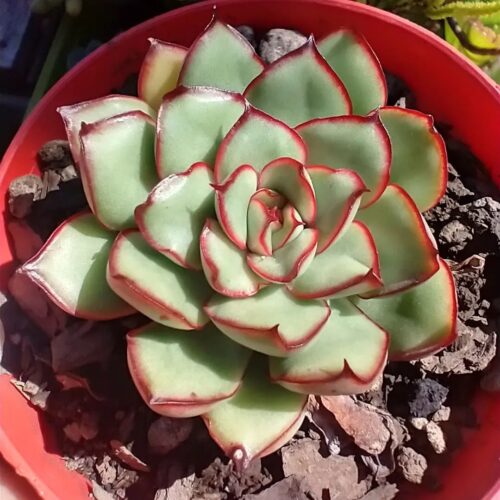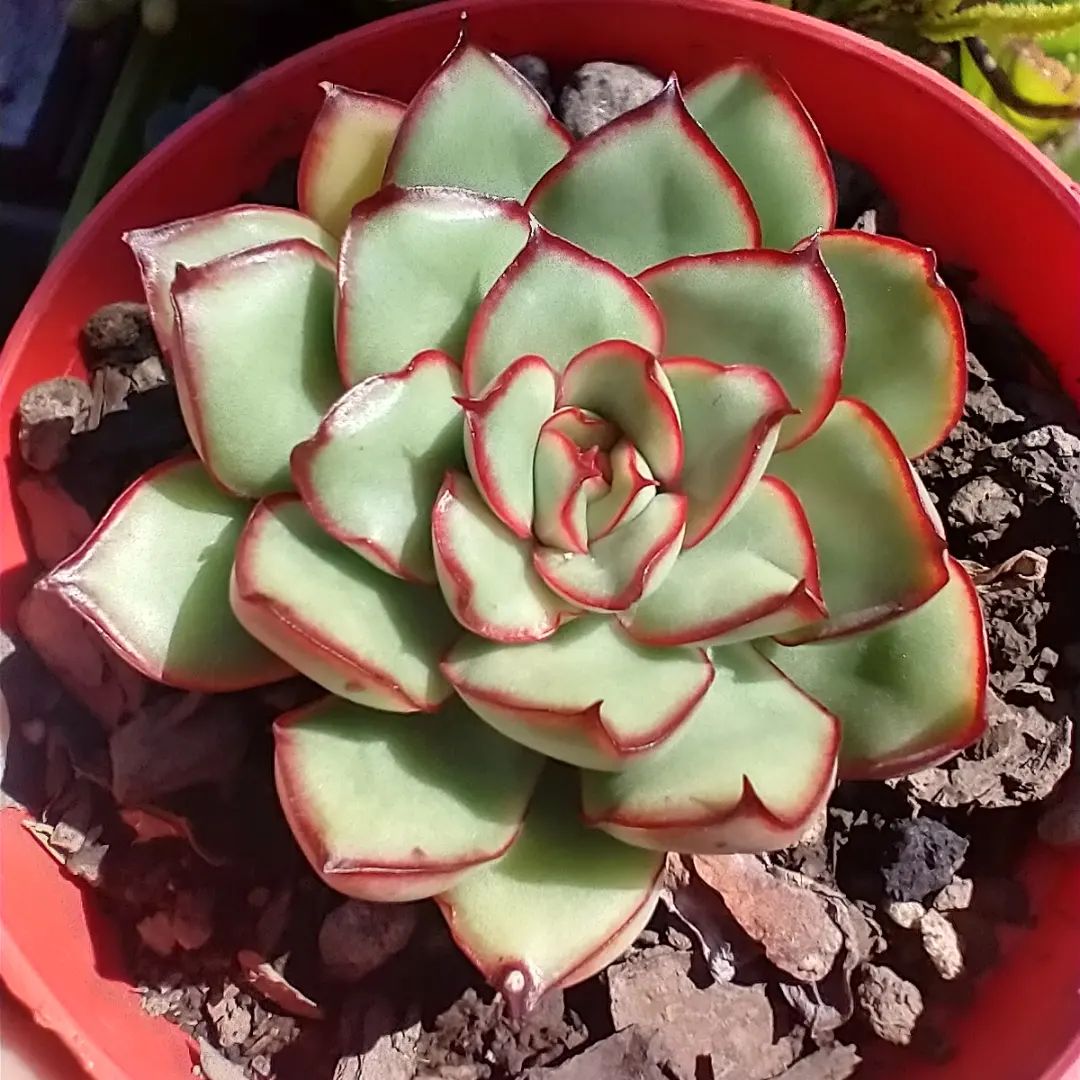Looking for a colorful succulent for a festive display that has low needs then grow Echeveria ‘Christmas’ with red-green leaves.
Echeveria ‘Christmas’ is a cross hybrid between Echeveria pulidonis and another unknown Echeveria. However, it is listed as a variety of Echeveria agavoides or a hybrid of Echeveria pulidonis and agavoides. At the same time, the plant doesn’t show any visible traits from Echeveria agavoides in its appearance.
Echeveria ‘Christmas’ is a lovely succulent that shows off tight rosettes of thick, apple-green leaves with red margins and a dark red tip. The rosettes can grow as large as 8 inches (20 cm) across. The foliage is thinner compared to Echeveria pulidonis.
It produces yellow bell-shaped blooms in summer on arching slender stems that can grow up to 16 inches long.
Botanical Name: Echeveria agavoides ‘Christmas’
USDA Zones: 9b-11b
Propagating Echeveria ‘Christmas’
From Seeds
The quality of the seeds is very important when growing Echeverias from seeds. Fresh seeds have a better chance of sprouting. The best time to plant them is in spring or summer. The seeds usually start sprouting in 2 to 3 weeks. It can take 18 months to 3 years for the seedlings to fully grow.
Note: Stem cuttings for propagation are not an ideal method for plants with rosettes that grow close to the ground.
From Leaf Cutting
Leaf-cutting is a simple method for propagating echeverias. Carefully twist the leaf from the stem and leave it to callous for a few days. Now, place the leaf on a well-draining soil.
Tip: Take at least two leaves for the best results, as not every leaf you are propagating can form a new plant.
Ideal Growing Conditions for Echeveria ‘Christmas’

Light
Keep the plant in full sun to partial shade but avoid exposure to afternoon sun during summer. When moving the plant outdoors during spring, do it slowly. In the winter, when plants are indoors, place them near the window that gets bright, indirect light. Also, rotate the plant frequently so it doesn’t stretch for light.
Soil
Use a well-draining, porous potting mix so excess moisture stays away from the roots. You can also use a cacti or succulent mix or create your own by mixing three parts of regular potting soil with two parts coarse sand and one part perlite. The pH for this plant has to be 6.0 or slightly acidic.
Water
Echeverias don’t like to be kept too wet or too dry. If the leaves look wrinkled, they need more water. Water them moderately from spring to fall. Use the “soak and dry” method: let the soil dry out completely before watering again. If you have saucers under the pots, empty them after a little while. In winter, water just enough to keep the plants from shriveling.
Most importantly, do not allow the water to settle in the rosette, as it can lead to rot and fungal diseases.
Temperature
It can handle several degrees below freezing, but they shouldn’t be grown outdoors in harsh conditions. Bring them indoors before the temperature drops to keep them healthy through winter. Once the risk of frost has passed, you can move them back outside in the spring. Most Echeverias are cold hardy down to USDA zone 9a, or around 20°F (-6.7°C).
Echeveria ‘Christmas’ Care
Fertilizer
Echeverias can grow fine without fertilizer, but a little extra nutrients can help. In spring, you can use a slow-release fertilizer or a liquid fertilizer, but make sure to dilute the liquid one 2 to 4 times more than usual and use it less often. Be careful not to overfertilize, as it is easier to give too much than too little.
Repotting
Repot the echeveria in spring or early summer when roots are coming out from the drainage holes. Before repotting, ensure the soil is dry. Use a pot 5-10 percent larger than the root ball. A 4-inch plant will accommodate a planter that is 4.5 inches in diameter or larger than the rosette.
Pruning
Remove dead leaves or blooms frequently. This will prevent rot or diseases.
Pests and Diseases
Mealybugs can be a problem with echeveria ‘Christmas.’ Discard dead foliage frequently as they attract pests or lead to fungal diseases. Also, avoid overwatering the plant.
Toxicity
Echeveria is non-toxic to pets and humans. However, it is suggested to avoid consuming the plant.



